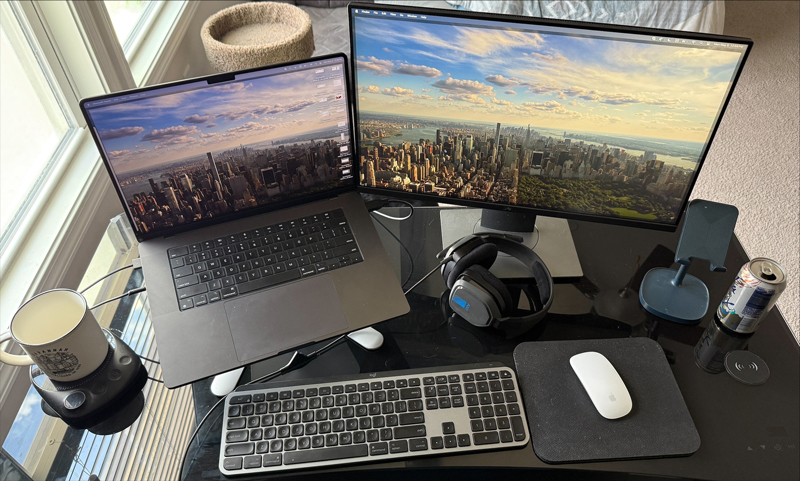If you had met Jack Labriola ten years ago, you’d probably find him walking the halls of the English department in Texas Tech, navigating graduate school, juggling coursework, teaching undergraduates, and planning for a life in academia. He loved the classroom, thrived in it, but like many of us with curious minds and evolving ambitions, Jack’s story took a turn when he ventured into a thriving user experience research career in the tech industry. Jack completed both his master’s and PhD at Texas Tech University, spending six years immersed in the well-structured Technical Communication and Rhetoric program. He describes the experience as “fantastic, a tight-knit academic community that feels more like family than just a cohort”. He speaks fondly of the connections he made there: people who showed up at his wedding party and stood beside him in major life moments.

Jack had always envisioned himself teaching, maybe in a high school, or something close. He developed this interest while studying English for his bachelor’s and offering courses in professional writing and user experience. While in graduate school, he eagerly pursued every academic opportunity he could- presentations, competitions, conferences, teaching assistantship roles, and publishing. It paid off when he landed a tenure-track position at Kennesaw State University with the Technical Communication and Interactive Design Department, where he taught courses in technical writing, usability, information architecture, and introduction to design. In the three years he spent at KSU, 2019-2022, Jack relaunched their usability research lab, once led by Carol Barnum. But over time, a question lingered: could he make a greater impact in the industry than in academia? Eventually, he realized that industry offered him more: a direct application of his UX skills, better work-life balance, and, frankly, better compensation. So Jack made the leap, first to Truist Bank and now as a Senior UX Researcher at Sage, a global accounting software company. He admits that he misses the teaching, the students, and the impacts he had on them.
For Jack, transitioning wasn’t only about finding a new job, it was about translating academic experience into industry. The knowledge learnt in his courseworks, methodologies, tools, research and communication skills were incredibly valuable. His PhD dissertation became a portfolio case study that he could maximize for job applications. His time in the classroom, defending ideas and guiding students, mirrored the real-world tasks of presenting research findings to product teams and executives. The most valuable skill transferred, according to Jack, is communication: “It’s our underrated superpower”, he mentioned. The ability to distill complex information and communicate it effectively to different audiences, something technical communication students are trained in, became the solid scope of his daily work. Whether he’s advocating for users who’ve worked on Excel spreadsheets for 30 years or translating research insights for engineers and designers, his academic training gave him the tools to do it with confidence.
At Sage, Jack’s role is dynamic. He works with a global team of ten designers, three content folks and three other researchers. He leads user interviews, develops research plans, recruits participants (the hardest part, he says), and presents actionable insights. His work touches the very heart of digital transformation, that is, helping traditional accountants transition into modern, tech-supported workflows without alienation or overwhelm. He receives research requests, often tied to improving user experience and leads the process from start to finish. This includes understanding the problem, creating research plans, writing interview questions, gathering feedback, recruiting participants, conducting interviews, analyzing data, and presenting insights. The entire process usually takes about six weeks and is highly collaborative. Jack describes his role as part research consultant and part user advocate- always focused on turning questions into actionable user-centered solutions.

In his advice to current graduate students who may be interested in pursuing industry roles, Jack encourages an early start in thinking about industry paths: “Don’t wait until your final semester to read job ads”. He recommends studying job descriptions to understand the tools, skills, and expectations recruiters are looking for, and then using academic projects and coursework to fill in those gaps. Jack emphasizes that even without formal industry experience, academic work can become a strong portfolio: what matters is the ability to communicate clearly, connect ideas, and explain work processes. Ultimately, translating academic training into industry language is key, and it’s a skill technical communicators already have.
Jack also reflected on the evolving role of digital rhetoric in UX. For him, it’s about empathy, bridging the gap between new technologies and real users. Whether designing interfaces or crafting onboarding flows, it’s about meeting people where they are. This user-centered mindset, grounded in rhetorical training, is what shapes meaningful digital experiences, according to him. In his view about AI, Jack sees it as a powerful assistant, not a replacement for UX professionals. While he firmly believes that AI can’t match the reality of live, human-led research interviews, he uses it to speed up processes like analyzing transcripts and identifying initial themes. For example, when pressed for time before a major meeting, Jack used AI to pull out early insights from interview transcripts, which helped him quickly prepare a useful presentation. Designers on his team also use generative AI tools to create rough wireframes for rapid testing. To Jack, the value of AI lies in its ability to augment existing work, not take it over and he encourages others in the field to explore these tools strategically, not avoid them.
Jack’s advice for students and educators?
For students: “Start looking at job ads early. Use your coursework and projects to build a portfolio even if it’s academic. Focus on learning tools and methods you see in real job descriptions”.
For educators: “Teach tools in context. Don’t shy away from introducing Figma, usertesting.com, or Camtasia. These tools give students a head start and help them connect theory to practice”.
Jack’s journey reminds us that transitioning from academia to industry isn’t about leaving one world behind. He carried academia’s best lessons forward, using them as the foundation to build a thriving career in UX research. Whether you’re a graduate student wondering how your coursework translates to the real world, or an educator thinking about how to equip students for life beyond the classroom, Jack’s story is a guiding light. He shows us that technical communication and digital rhetoric are more than academic fields, but also tools for real-world impact, user-centered innovation, and meaningful work. Jack’s blend of empathy, insight, and skill reminds us that thoughtful transitions can lead to exciting, fulfilling careers that bridge disciplines, industries, and even life paths.
Jack generously shared a rich collection of resources to support students, early-career professionals, and anyone interested in breaking into UX research. His thoughtfulness in curating these resources shows his continued commitment to mentorship and knowledge-sharing beyond the classroom.
Getting Started in UX Research
UX Basics: Study Guide (Nielsen Norman Group): A curated collection of foundational articles and videos introducing core UX principles and practices.
How to Start a New Career in UX (Nielsen Norman Group): Advice on transitioning into UX without a formal degree, emphasizing mentorship and evolving your current role.
UX Research Methodologies Overview (UX Planet): An overview of qualitative UX research methods like interviews and usability tests, focusing on understanding user behaviors and motivations
Essential UX Research Methods & Tools
When to Use Which UX Research Methods (Nielsen Norman Group): A guide mapping 20 UX research methods across different project phases to help select the appropriate approach.
UX Research Cheat Sheet (Nielsen Norman Group): A quick-reference tool outlining various UX research methods, their applications, and optimal usage scenarios.
6 Powerful User Research Methods (UX Planet): An exploration of six key research methods, including card sorting and A/B testing, to validate design hypotheses effectively.
Core Skills for UX Researchers
2021 In-Demand Skills for UX Researchers (UX Planet): An analysis of top skills sought in UX research roles, emphasizing flexibility and a diverse methodological toolkit.
Online UX Research: Which Skills Should Be Developed? (UX Planet): Focuses on developing observational skills and analytical thinking crucial for online UX research.
Building a UX Research Portfolio
Are We Taking the “U” Out of UX? (Boxes and Arrows): Discusses the importance of showcasing research skills and processes in UX portfolios.
How to Build a UX Research Portfolio (dscout): Provides practical examples and structure tips for creating a standout UX research portfolio.
Why Your UX Portfolio Needs Case Studies (UX Collective): Emphasizes the value of detailed case studies in demonstrating problem-solving and research impact in portfolios.
Toolkits & Frameworks
Google’s HEART Framework(Medium): Introduces a scalable method for measuring UX with metrics across Happiness, Engagement, Adoption, Retention, and Task success.


